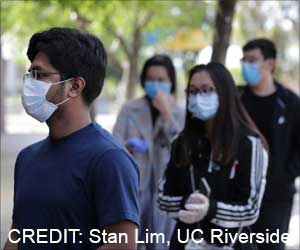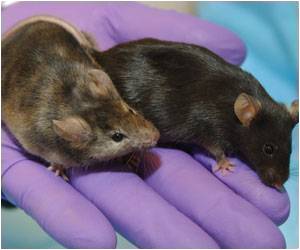In mouse model researchers have prompted the production of a protein that can block multiple variants of the SARS-CoV-2 virus from entering cells and causing disease.

New COVID-19 Treatment
Findings were published in ACS Nano. Next steps involve showing that the protein prevents infection in mice, said Sahay, who added that the mRNA treatment is possibly “a couple of years” away from being available to human patients.‘'Decoy' enzyme that binds to corona virus spike protein can be produced by using mRNA packaged in lipid nanoparticles as shown in mouse model’





Breathing in the virus is the primary way to contract COVID-19, blamed for 6 million deaths globally since the pandemic began in late 2019. The virus’ envelope is covered in spike proteins that bind to an enzyme produced by cells in the lungs. The study, which involved messenger RNA that was administered intravenously and also through inhalation, which would be the preferred delivery method for humans, was published in Advanced Science.
“Proteins are large, complex molecules that serve as the workhorses of cells, enabling all of the biological functions within a cell,” said Sahay, an associate professor in the OSU College of Pharmacy. “DNA holds the blueprints from which proteins get made after the code is first transcribed into messenger RNA.”
An enzyme is a type of protein that acts as a catalyst for biochemical reactions. HACE2 – short for human angiotensin-converting enzyme 2 – is an enzyme of the airway cells. It is also expressed in the heart, kidney and intestine, and has a hand in numerous physiological functions. Simply giving a COVID-19 patient hACE2 would have limited effectiveness in treating the disease, Sahay said, because the soluble form of the enzyme, the kind that can circulate throughout the body, has a short half-life – less than two hours, meaning it wouldn’t stay in a person’s system very long.
Advertisement
Nanoparticles and Treatment of COVID-19
In this study, the researchers engineered synthetic mRNA to encode a soluble form of the enzyme, packaged the mRNA into lipid nanoparticles and delivered it to cells in the liver with an IV; within two hours, the enzyme was in the mice’s bloodstream, and it stayed there for days.The scientists also delivered the loaded LNP via inhalation, prompting epithelial cells in the lungs to secrete soluble hACE2.
Advertisement
In addition to Sahay, other Oregon State scientists contributing to the research were Jeonghwan Kim, Antony Jozic, Anindit Mukherjee and Dylan Nelson. The studies with the live virus were performed in collaboration with Texas Biomedical Research Institute scientists Kevin Chiem, Md Siddiqur Rahman Khan Jordi B. Torrelles, and Luis Martinez-Sobrido.
Funding from the OSU College of Pharmacy supported this study. Sahay lab is supported through funding from NIH and Cystic Fibrosis Foundation.
Source-Eurekalert















